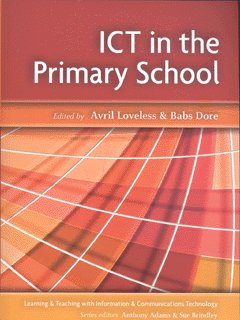Filters
Clear allSubject
- Careers (10) Apply Careers filter
- Climate Change (1) Apply Climate Change filter
- Cross curricular (19) Apply Cross curricular filter
- Design and technology (76) Apply Design and technology filter
- Engineering (58) Apply Engineering filter
- Food Preparation and Nutrition (1) Apply Food Preparation and Nutrition filter
- Leadership (1) Apply Leadership filter
- Mathematics (72) Apply Mathematics filter
- Personal development (2) Apply Personal development filter
- Psychology (1) Apply Psychology filter
- Science (84) Apply Science filter
- STEM Clubs (4) Apply STEM Clubs filter
Age range
Type
- Activity sheet (27) Apply Activity sheet filter
- Article (22) Apply Article filter
- Demonstration (1) Apply Demonstration filter
- Experiment (1) Apply Experiment filter
- Game (2) Apply Game filter
- Group work (4) Apply Group work filter
- Image (11) Apply Image filter
- Information sheet (5) Apply Information sheet filter
- Open-ended task (1) Apply Open-ended task filter
- Poster (3) Apply Poster filter
- Presentation (8) Apply Presentation filter
- Research (27) Apply Research filter
- Self assessment (1) Apply Self assessment filter
- Simulation (1) Apply Simulation filter
- Teacher guidance (40) Apply Teacher guidance filter
- Textbook (1) Apply Textbook filter
- Video (13) Apply Video filter
- (-) Remove Include Physical Resources filter Include Physical Resources
Showing 297 results
The three pupils' books in this series follow up and extend the materials in Pre-Computer Activities, the popular book for teachers.
...
This in this activity SEND pupils will learn to break down a problem into smaller steps, to create a sequence of instructions for someone to follow and to understand that the order of instructions are important. Pupils will decompose the act of getting ready for school by breaking down the activity into smaller...
Charlie Taylor’s Behaviour Checklists, Getting the Simple Things Right, look at the simple things that should be put in place to create good behaviour for learning. It includes the two lists 'key principles for headteachers to help improve school behaviour' and 'behaviour checklist for teachers'.
This edition of the Computing at School newsletter contains articles covering:
*Computing curriculum change
*Programming pedagogy
*Database Detectives, a Digital School House resource
*Unplugged computing
*Scratch in the primary classroom
*Real robotics – outreach from...
A simple and easily adaptable idea to introduce how algorithms work by allowing students to work out algorithms by a guessing game without the use of a computer. The activity is based on function machines that are used in mathematics at primary school but the level of difficulty can be amplified depending on what...

Ian Livingstone is one of the founding fathers of the British gaming industry. In Hacking the Curriculum, he and Shahneila Saeed explain the critical importance of...
In this activity SEND pupils will learn to follow instructions, to create an algorithm for people to follow, to debug an algorithm and to use repetition in a sequence of instructions. Pupils will create a set of instructions to sing the well-known song ‘Head, Shoulders, Knees and Toes’.
Hello Ruby consists of a catalogue of unplugged activities for pupils to learn about computing and coding without devices. These STEM activities include computational thinking concepts such as decomposition, pattern recognition, thinking algorithmically and debugging problems.

Meet Ruby - a small girl with a huge imagination, and the determination to solve any puzzle. As Ruby stomps around her world making new friends, including the Wise Snow Leopard, the Friendly Foxes...
Combine Egyptian Hieroglyphics with the teaching of pixels and digital images in computing, with this colour by Egyptian hieroglyph pixel puzzle.
In this activity SEND pupils will learn to spot and reuse patterns to support their understanding of the Computing curriculum as they develop their computational thinking. Pupils will identify similarities between different houses and use them to create their own house.
This edition of the Computing at School newsletter contains articles covering:
*Coding and computer science
*Code Club and Computing ++
*Tips for teaching programming
*Codecademy
*Teaching encryption with spreadsheets
*Scratch sensorboards (picoboards)
*Robotics...

Take a look into the workings of our digital planet! From computer programs and WiFi to hardware and hard drives, this series will take you inside the computer and online world that you use...

What does ICT offer to the quality of young children's learning? What are some of the key isues which teachers need to address in the 'Information Society'? How does children's experience of ICT in school relate to...
A range of downloadable classroom posters to support learning in science, computing and engineering. They link to curriculum topics including: forces,...
